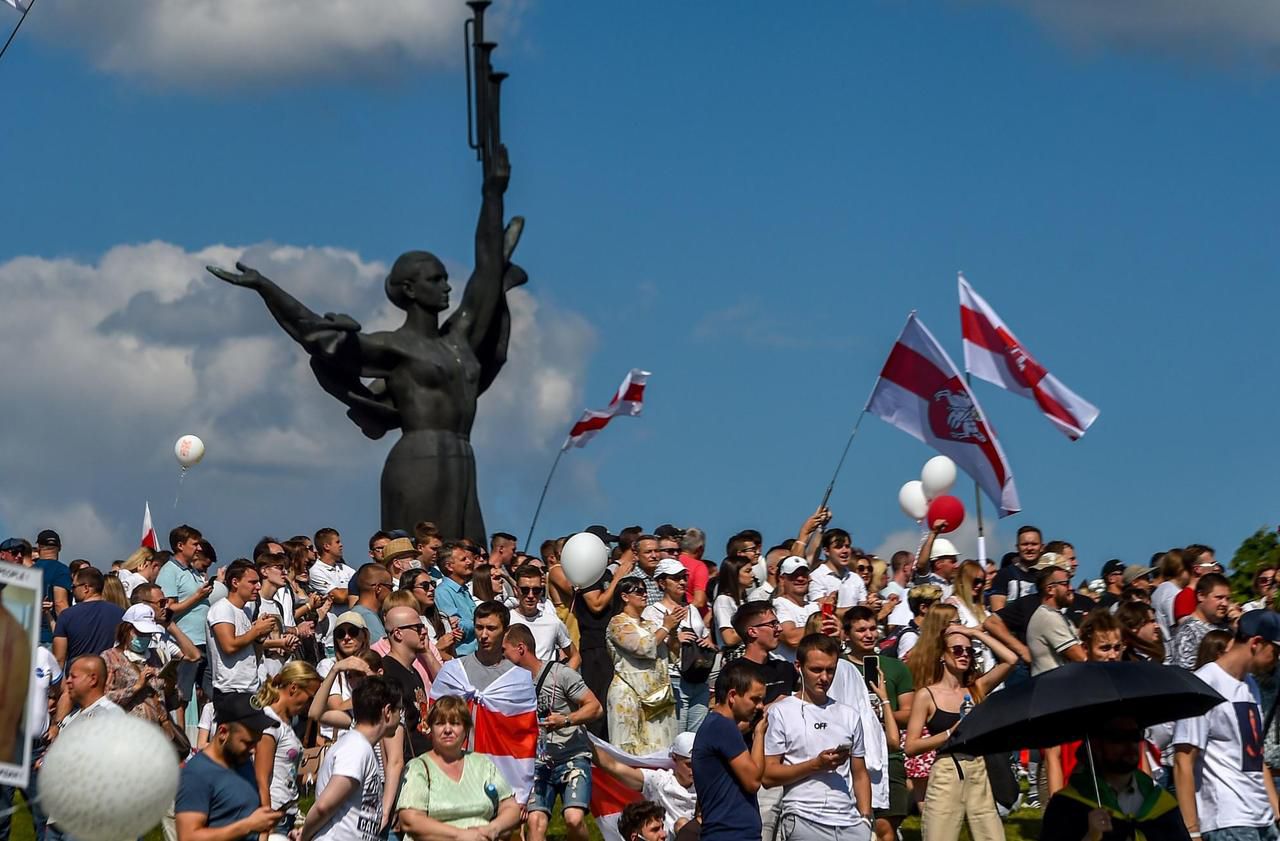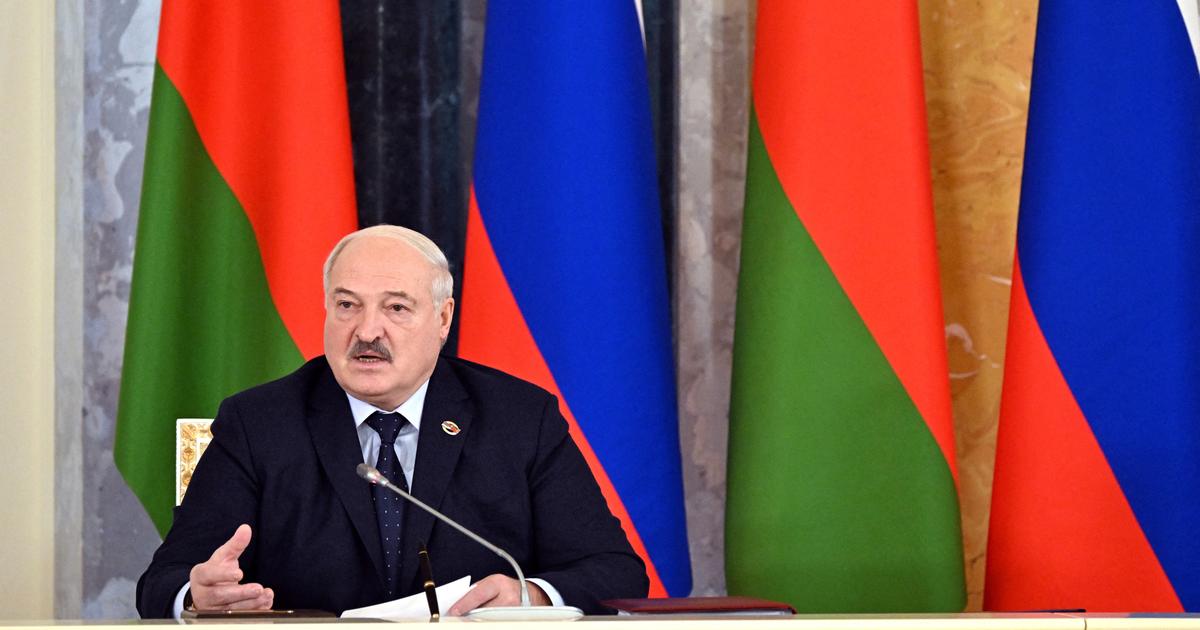Revolution or simple protest movement? Since August 9 and the proclamation of the new victory in the presidential election of Alexander Lukashenko, despite very strong suspicions of fraud, Belarus has been shaken by demonstrations that the strong man of Minsk has chosen to suppress.
On the one hand, Lukashenko, therefore, in power since 1994. On the other, a motley opposition which seems to be gaining ground day by day to the detriment of what is called "the last dictator of Europe", who even the elderly, working or agricultural populations, traditionally behind him, seem to no longer follow.
What power relations are at work in Belarus? To better understand it, we looked at the geographic, political and economic profile of the country through five infographics.
A landlocked geographical location
Direct border of the European Union, with Poland to the west, Lithuania and Latvia to the north, Belarus is neighboring Ukraine to the south and the Russian Federation to the east. On this landlocked territory whose highest point does not exceed 350 meters, swamps and forests occupy two thirds of an area close to 40% of that of metropolitan France.
This geographical location is decisive for understanding the policy pursued by President Lukashenko for a quarter of a century. The landlocked nature of the country in fact explains the emphasis the regime has placed on maintaining the agricultural and forestry sectors, as well as the type of nation it has chosen to federate: in a territory where several speaking peoples coexist. several languages, Lukashenko played the card of the unifying political project, using Russian as a common language.
As explained by Anna Lebedev, lecturer in political science at the University of Paris-Nanterre and specialist in post-Soviet societies, “it is a border country and a zone of passage, notably of pipelines and goods. When Moscow imposed sanctions on European food products, Russian importers shipped their orders through Belarus and then re-labeled their origin. That's how we ended up with Belarusian shrimp on the Moscow stalls. "
A unique economic and social model
Belarus is also a UFO in the post-Soviet world. In the early 90s, after the fall of the USSR, many former satellite countries sought to distance themselves from Russia and, like the Baltic countries, turned to capitalism. Belarus does the opposite and maintains a strong relationship with its Russian neighbor. When Alexander Lukashenko came to power in 1994, he even went back over the reforms initiated since the collapse of the Soviet bloc, refused “savage capitalism” and committed the country to an interventionist economy, controlled and supported by the state apparatus. A "market socialism" which is based on a line of conduct: the State defines economic priorities, leaving companies to develop on condition that they align themselves with the rules of the game set by the State.
This stranglehold on the economy has enabled the country to maintain its industry level (36% of GDP in 2018) and a larger agricultural sector than in the rest of the countries in the region. The service activities also did not fail to develop under the Lukashenko era, generating year after year half of Belarusian GDP.
Newsletter - Most of the news
Every morning, the news seen by Le ParisienI'm registering
Your email address is collected by Le Parisien to enable you to receive our news and commercial offers. Learn more
This country of 9.5 million inhabitants has - officially - almost full employment (less than 5% unemployment in 2018), and a literacy rate of 100%, as in almost all of the former Soviet republics .
Life expectancy there is 74 years, up, since it increased by 6 years between 2002 and 2018. Belarus also has an infant mortality rate of 2.6 per 1000 births, against 3 in France and in Germany.
This social model is still based on values derived from communism. It has earned Alexander Lukashenko some support from the population, relieved to be relatively spared by the series of crises and economic rebounds experienced by his neighbors. "The social model promoted by Lukashenko, deciphers Anna Lebedev," consisted in maintaining public hospital, school or cultural services. If the health infrastructures are aging, the population benefits from a universal health system with a policy of prevention and compulsory visits. "
A country very dependent on Russia
Since its independence, Belarus has turned to exports to the sub-region, whether they are agrifood (especially dairy products), manufactured (clothing for example) or from the petrochemical industry.
Russia is no longer its only trading partner, or almost. Its exports to the neighboring giant, which represented 65% of the total in 1996, fell to 31% in 2009, to stabilize around 40% during the last decade. On the import side, however, the country remains particularly dependent on its gigantic neighbor. Of the 18 free trade treaties to which Belarus adheres, 10 include Russia and none bind the country to the European Union.
At the start of 2020, Belarus experienced a first recession, due to a decrease in Russian oil deliveries. The situation has further deteriorated significantly with the coronavirus crisis and the almost complete cessation of imports from Ukraine, the Netherlands and the UK, its other main partners.
In addition, for the past ten years, the drop in the price of hydrocarbons has particularly affected the country's economy. Proof of this is that the share of national income held by the wealthiest 20% has decreased from 40% in 1998 to 35% in 2018. However, “it is much more due to the drop in the income of entrepreneurs than a desire to redistribute wealth, ”comments Anna Lebedev.
An authoritarian and aging political system
The August 2020 elections, with disputed results, are not the first of their kind. The whole political career of Alexander Lukashenko falls under an authoritarian line, not supporting criticism or opposition. Each presidential election was marked by protests from national opponents as well as from national or international institutions. On August 19, the President of the European Council also refused to recognize the result of the election and promised additional sanctions against a "substantial" number of leaders of the regime responsible for "violence, repression and electoral fraud" .
The International Institute for Democracy and Electoral Aid (IDEA) in Stockholm provides an annual overview of democratization in the world. In 1994, the institute still considered the country to be a democracy. The following year, Belarus entered the category of hybrid regimes, then authoritarian regimes from 2000.
This deterioration of the internal political climate, coupled with an increasingly marked isolation on the international level and the complete absence of prospects for political renewal (Lukashenko has planned to hand over power to his younger son Nikolai), have gradually eroded the support Of the president.
More recently, the older generations, traditionally behind Lukashenko, seem to have been taken aback by his refusal to take any preventive measure against the Covid-19 pandemic.
For their part, the younger generations, who only experienced the Lukashenko era, benefited from good quality education and modern communication infrastructure (there are 122 mobile phone subscriptions per 100 inhabitants, compared to 108 in France) and aspire to more civil and political liberties.
This gradual opening up of civil society is visible in the country's relationship to tourism: while Belarus did not attract more than 60,000 tourists in 2000 (mainly hunters, attracted by the last primary forests in Europe, which have remained intact since several thousand years), they were more than 11 million in 2018 and brought in more than a billion dollars in the country. Seven million of them came from Russia and two million from Ukraine. They come in particular, since 2009, because of the ban on casinos in these two countries.
The explosion in the numbers of tourist arrivals in the country from 2012 could also be explained by the designation of tourism as a major national priority in order to face the consequences of the economic crisis of the time. A plan was to develop the attractiveness of the country and its infrastructure between 2011 and 2015, culminating in the hosting of the Ice Hockey World Championship in spring 2014.
But, as in many authoritarian countries, these statistics, like others that depend on Belarusian power, should be taken with caution. "In a country with such strong state supervision, the figures coming out of the field have an interest in indicating that all is well", concludes Anna Lebedev.





